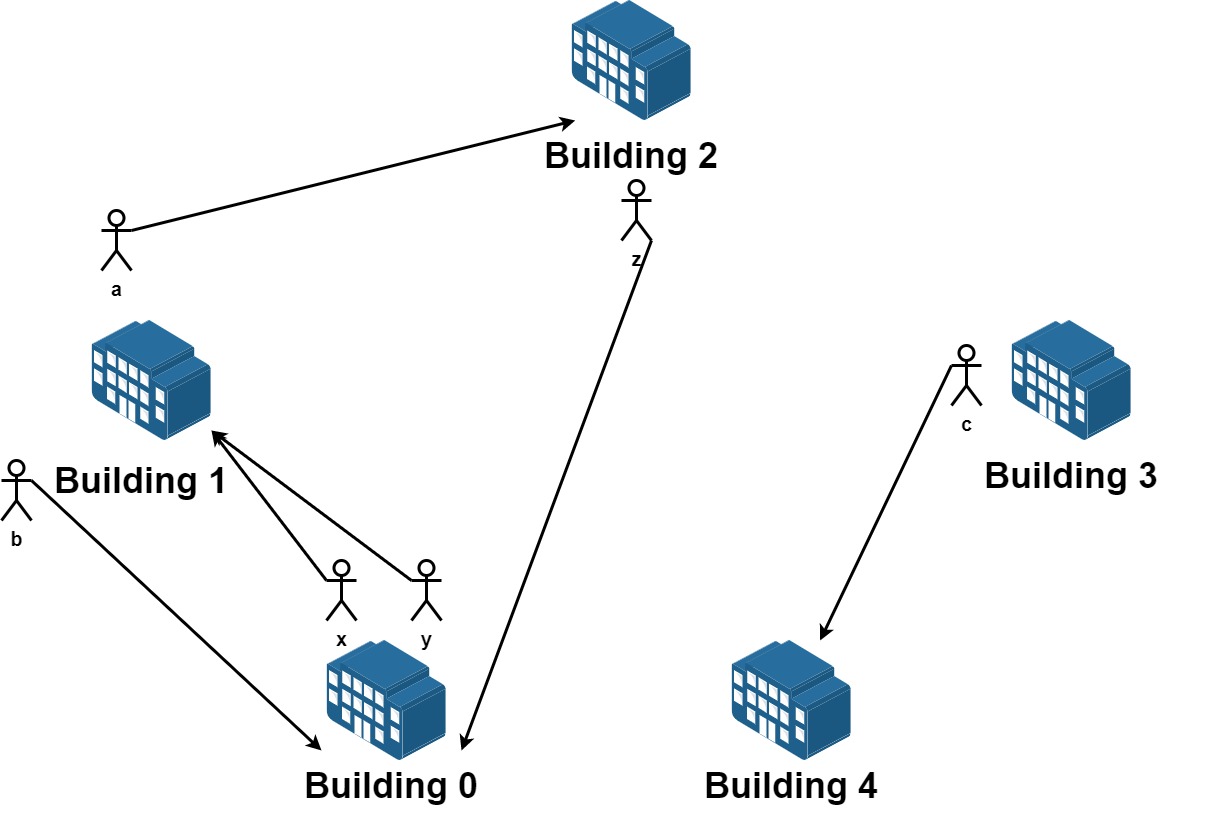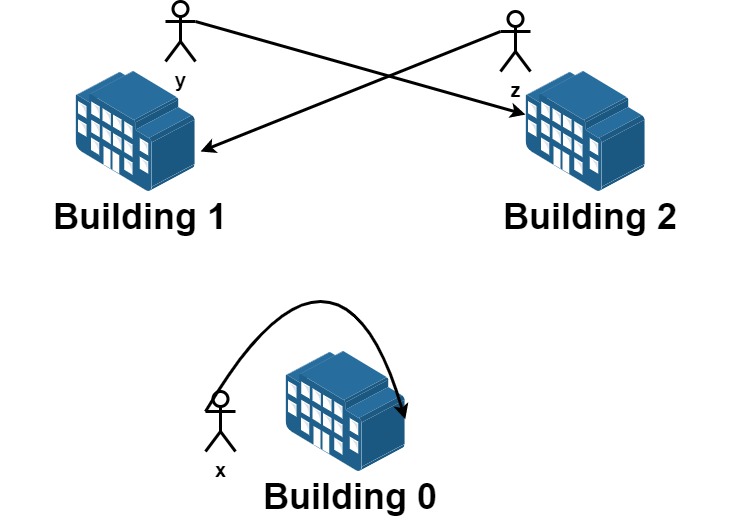Class Solution
- java.lang.Object
-
- g1601_1700.s1601_maximum_number_of_achievable_transfer_requests.Solution
-
public class Solution extends Object
1601 - Maximum Number of Achievable Transfer Requests.Hard
We have
nbuildings numbered from0ton - 1. Each building has a number of employees. It’s transfer season, and some employees want to change the building they reside in.You are given an array
requestswhererequests[i] = [fromi, toi]represents an employee’s request to transfer from buildingfromito buildingtoi.All buildings are full , so a list of requests is achievable only if for each building, the net change in employee transfers is zero. This means the number of employees leaving is equal to the number of employees moving in. For example if
n = 3and two employees are leaving building0, one is leaving building1, and one is leaving building2, there should be two employees moving to building0, one employee moving to building1, and one employee moving to building2.Return the maximum number of achievable requests.
Example 1:

Input: n = 5, requests = [[0,1],[1,0],[0,1],[1,2],[2,0],[3,4]]
Output: 5 Explantion: Let’s see the requests:
From building 0 we have employees x and y and both want to move to building 1.
From building 1 we have employees a and b and they want to move to buildings 2 and 0 respectively.
From building 2 we have employee z and they want to move to building 0.
From building 3 we have employee c and they want to move to building 4.
From building 4 we don’t have any requests.
We can achieve the requests of users x and b by swapping their places.
We can achieve the requests of users y, a and z by swapping the places in the 3 buildings.
Example 2:

Input: n = 3, requests = [[0,0],[1,2],[2,1]]
Output: 3 Explantion: Let’s see the requests:
From building 0 we have employee x and they want to stay in the same building 0.
From building 1 we have employee y and they want to move to building 2.
From building 2 we have employee z and they want to move to building 1.
We can achieve all the requests.
Example 3:
Input: n = 4, requests = [[0,3],[3,1],[1,2],[2,0]]
Output: 4
Constraints:
1 <= n <= 201 <= requests.length <= 16requests[i].length == 20 <= fromi, toi < n
-
-
Constructor Summary
Constructors Constructor Description Solution()
-
Method Summary
All Methods Instance Methods Concrete Methods Modifier and Type Method Description intmaximumRequests(int n, int[][] requests)
-